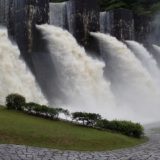What is Shinkansen?

Shinkansen is “railway capable of high-speed trains traveling at 200 km/h or more in the main section”. In other words, if there is a section that runs at more than 200 kilometers per hour, it is Shinkansen.
In order to realize high-speed operation, the width between the 2 rails of the Shinkansen is 1,435 mm (standard gauge), which is wider than that of conventional railways, which is 1,067 mm (narrow gauge). The voltage required to operate the vehicle is high, at 25000 volts (20,000 volts on a typical railway). Furthermore, there is no railroad crossing on the Shinkansen line.
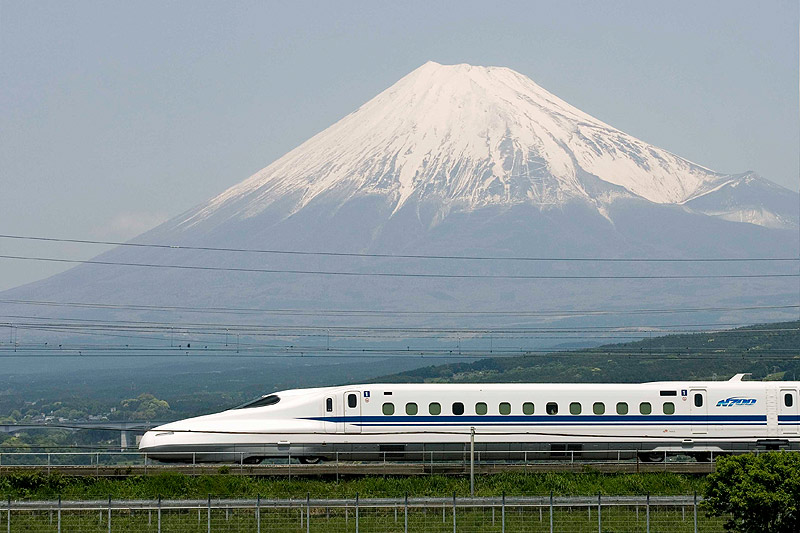
Shinkansen Lines
There are currently seven Shinkansen lines in operation. Furthermore, the Nagasaki route of the Kyushu Shinkansen between Hakata Station and Nagasaki Station (West Kyushu Route) is under construction, and the first route between Takeo-Onsen Station and Nagasaki Station is scheduled to open in 2022.
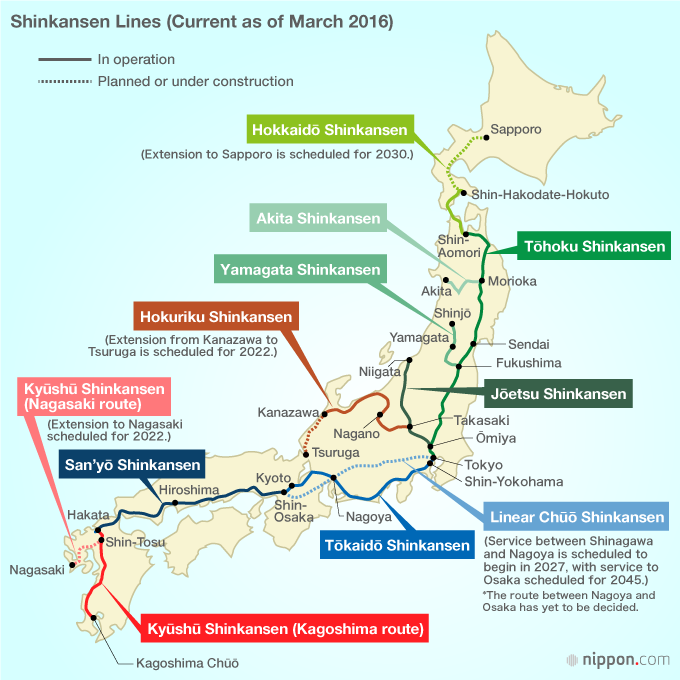
The Yamagata Shinkansen (Fukushima Station – Shinjo Station) and the Akita Shinkansen (Morioka Station – Akita Station) are called “Mini Shinkansen” but they are not legally Shinkansen because they operate at around 130 km/h, which is not over 200 km/h as defined by the Shinkansen.
Shinkansen and mini Shinkansen lines currently in operation
Tokaido Shinkansen/Tokyo Station – Shin-Osaka Station
*October 1, 1964 Commencement of operation ■ Maximum operating speed: 285 km/h
*Name of train: Nozomi, Hikari, Kodama
Direct trains between Tokyo Station and Hakata Station operate on the Sanyo Shinkansen.
Sanyo Shinkansen/Shin-Osaka Station – Hakata Station
*March 15, 1972 Commencement of operation ■ Maximum operating speed: 300 km/h
*Name of train: Nozomi, Mizuho, Sakura, Hikari, Kodama, Tsubame
“Nozomi”, “Hikari” and “Kodama” are operated from the Tokaido Shinkansen.
Tohoku Shinkansen/Tokyo Station – Shin-Aomori Station
*June 23, 1982 Commencement of operation ■ Maximum operating speed: 320 km/h
*Name of train: Hayabusa, Hayate, Yamabiko, Nasuno
Joetsu Shinkansen, Yamagata Shinkansen, Akita Shinkansen, Hokuriku Shinkansen and Hokkaido Shinkansen are connected.
Joetsu Shinkansen/Omiya Station – Niigata Station
*November 15, 1982 Commencement of operation ■ Maximum operating speed: 240 km/h
*Name of train: Toki, Max Toki, Tanigawa, Max Tanigawa
All trains go through from Omiya Station to Tokyo Station by the Tohoku Shinkansen.
Yamagata Shinkansen (Mini Shinkansen)/Fukushima Station – Shinjo Station
*July 1, 1992 Commencement of operation ■ Maximum operating speed: 130 km/h
*Name of train: Tsubasa
Direct operation with Tohoku Shinkansen between Tokyo Station and Fukushima Station (Combined operation with “Yamabiko”)
*The term “coupled train operation” refers to the operation of trains that run on the same section of the same route but go to different destinations.
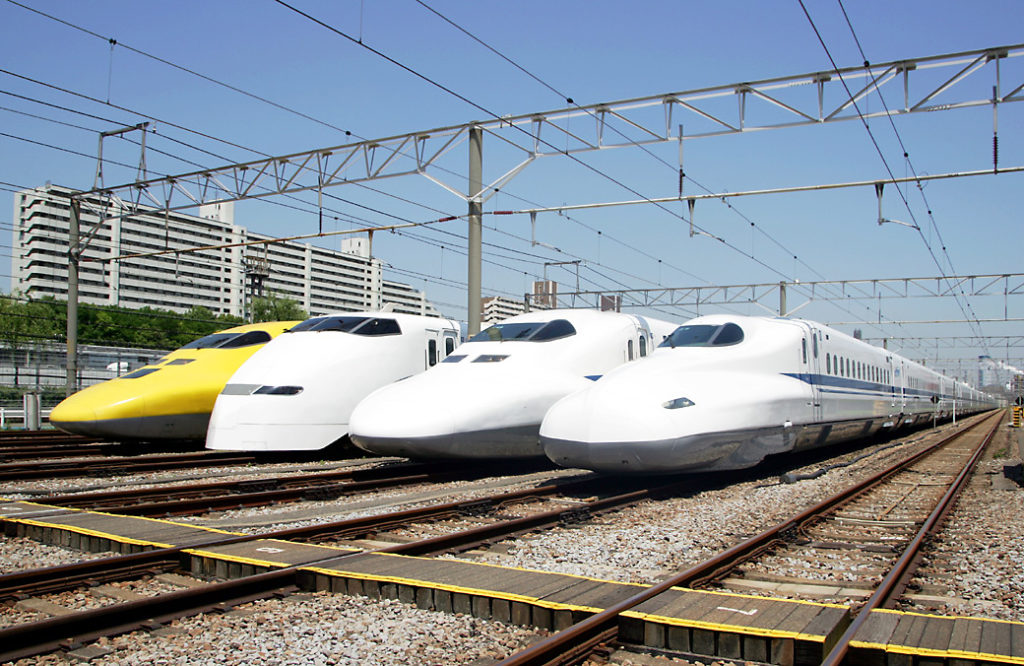
Akita Shinkansen (Mini Shinkansen)/Morioka Station – Akita Station
*March 22, 1997 Commencement of operation ■ Maximum operating speed: 130 km/h
*Name of train: Komachi
Direct operation with Tohoku Shinkansen between Tokyo Station and Morioka Station (Running in conjunction with “Hayabusa”)
Hokuriku Shinkansen/Takasaki Station – Kanazawa Station
*October 1, 1997 Commencement of operation ■ Maximum operating speed: 260 km/h
*Name of train: Kagayaki, Hakutaka, Tsurugi, Asama
All trains go to Takasaki Station by way of Joetsu Shinkansen and Tohoku Shinkansen.
Kyushu Shinkansen (Kagoshima route)/Hakata Station – Kagoshima-Chuo Station
*March 13, 2004 Commencement of operation ■ Maximum operating speed: 260 km/h
*Name of train: Mizuho, Sakura, Tsubame
“Mizuho” and “Sakura” run via the Sanyo Shinkansen to Shin-Osaka Station.
The Hokkaido Shinkansen line: between Shin-Aomori Station and Shin-Hakodate-Hokuto Station
*March 26, 2016 Commencement of operation ■ Maximum operating speed: 260 km/h
*Name of train: Hayabusa, Hayate
Shin-Hakodate-Hokuto Station and Sapporo Station are scheduled to open in 2031. There is a direct operation from Shin-Aomori Station to Tokyo Station by connecting to Tohoku Shinkansen.
Train Seriese

“700 series” debuted on March 13, 1999. It is the first car jointly developed by JR Tokai and JR West. It runs with high speed exceeding 270 km/h. It is also the basis for the development of “N 700 series” and “800 series”. As of 2017, these cars are used on the “Kodama” on the Tokaido/Sanyo Shinkansen and the “Hikari” on the Tokaido Shinkansen. And these all “700 series” eill be retired on the Tokaido Shinkansen in 2019.
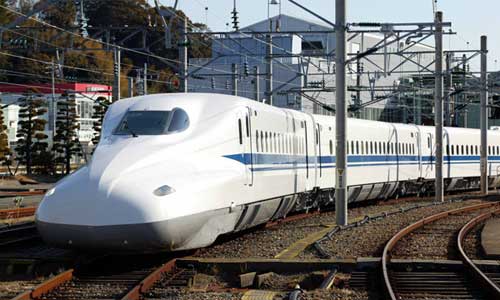
The top part is designed as an aero-stream type to reduce air resistance, vibration and noise. The maximum speed is 285 km/h.
At present, this type of train is operated as a temporary “Nozomi” mainly for “Hikari” and “Kodama”. Some trains have seats with power outlets.
By the end of 2019, this plan will becompleted. All vehicles will be “N 700 A Type” with excellent comfort and environmental performance, and the maximum speed will be unified to 285 km/h.
JR Tokai announced that an additional 20 trainsets of “N 700 A” would be introduced from fiscal 2016 to 2019, replacing “700 series” on the Tokaido Shinkansen (Between Tokyo and Shin-Osaka).
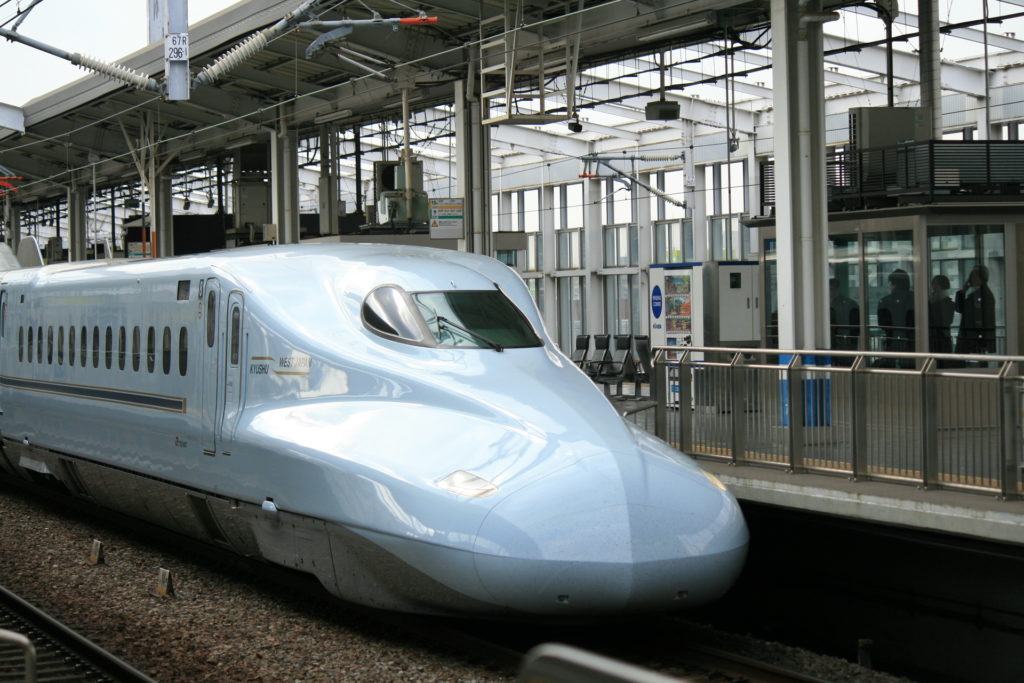
The body color of the Kyushu Shinkansen “Mizuho” is light blue. The impression is a little different from Tokaido and Sanyo Shinkansen, which are familiar with white body and blue line.
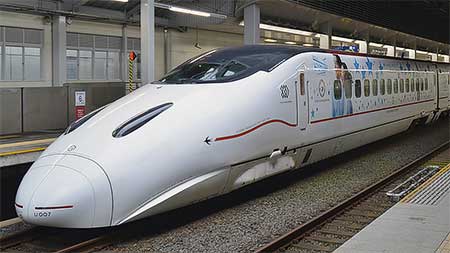
The Series 800 was developed as the first exclusive train car for the Kyushu Shinkansen and debuted on March 13, 2004. It is mainly used in “Sakura” “Tsubame”. The structure is based on the “700 series” but the shape of the head and interior have been changed. There are 6 kinds of seats including Nishijin-brocade style. It depends on the car you get on, and the interior decoration is gorgeous with gold on the wall of the car.

The “500 series”, which started operation on March 22, 1997, is a train developed by JR West for the Sanyo Shinkansen. Adopting a sharp super-long nose, it achieved a speed of 300 km/h, the fastest in the world at that time. This was mainly in oplation as “Nozomi” on the Tokaido and Sanyo Shinkansen lines.
In the car No. 8, there is a “driver’s seat for children”, where they can enjoy the feeling of Shinkansen drivers. In addition, the “500 TYPE EVA” in collaboration with the TV animation “Neon Genesis Evangelion” was operated until the spring of 2018.

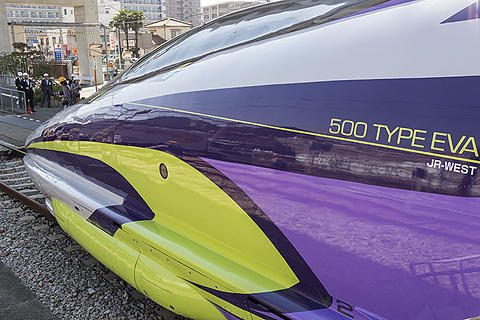

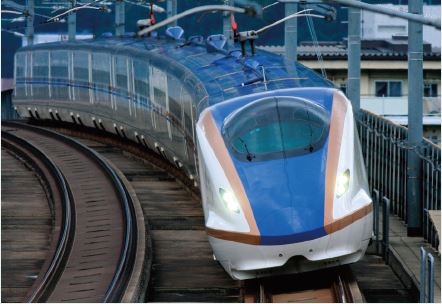
“E7 series” and “W7 series” are Shinkansen developed for Hokuriku Shinkansen. The operation between Tokyo Station and Nagano Station started on March 15, 2014, 1 year before the opening of the line between Nagano Station and Kanazawa Station. Currently, it is used in 4 types: “Kagayaki”, “Hakutaka”, “Asama”, and “Tsurugi”. “E7 series” is owned by JR East, and “W7 series” is owned by JR West. They are basically the same.
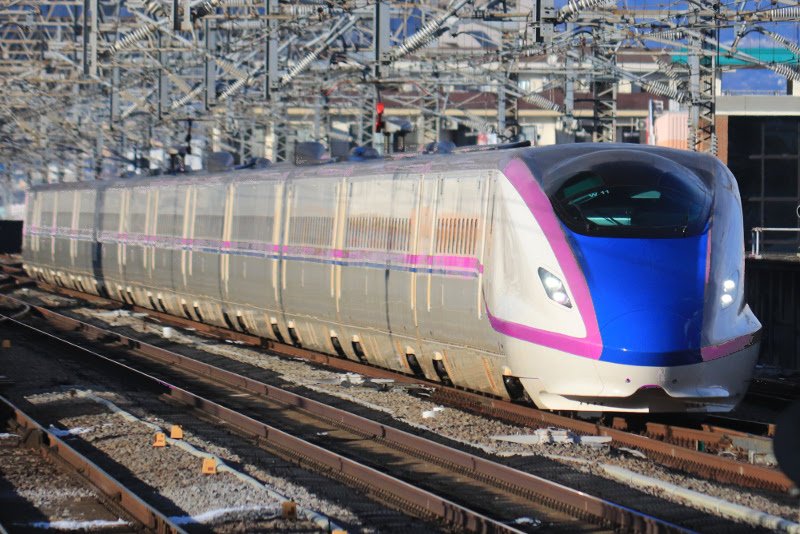

The “E7 series” Joetsu Shinkansen “Toki” cars have a pink line. It is said that the design is inspired by the feathers of a bird called “Toki” which is a national natural monument. In addition to ordinary cars and green cars, E7 and W7 have “Gran Class” with a capacity of 18 people. (Also set for E5 and H5 series)
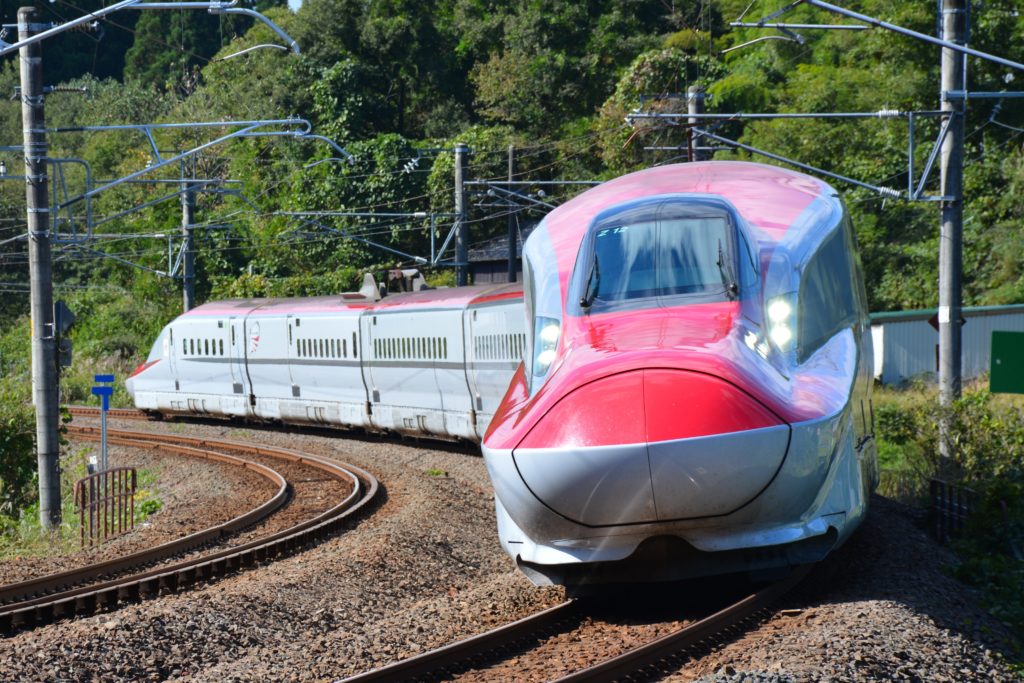
It is a mini-Shinkansen standard train developed for the Akita Shinkansen, which can operate through Shinkansen and conventional lines. It started to opelate on March 16, 2013. The main colors are “akane”, reminiscent of Akita, such as “Namahage” and “Kanto”. It is used not only as “Komachi” on the Akita Shinkansen, but also as “Hayabusa” “Yamabiko” and “Eggplant” on the Tohoku Shinkansen combined with “E5 series”. “E5 series” combined with “Hayabusa” is operating between Utsunomiya Station and Morioka Station at 320 km/h.
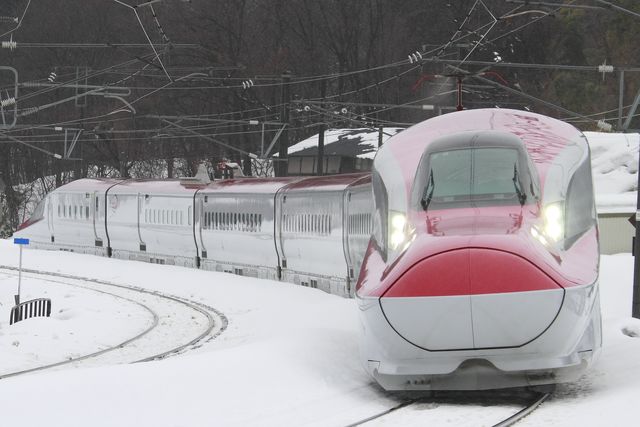
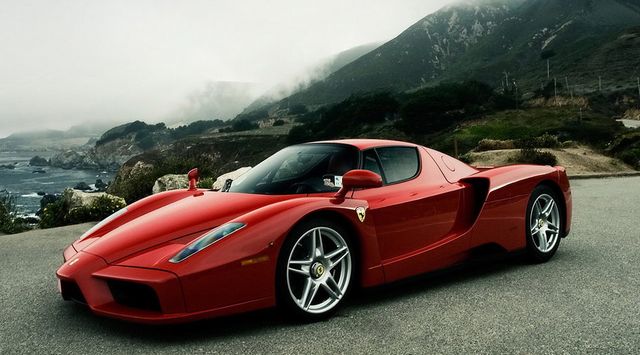
The design is from Pininfarina, a former designer known for “Ferrari Enzoferrari”.
The
editorial supervisor is Kiyoyuki Okuyama, a visiting professor and
director at Tama Art University. This is Enzo Ferrari (Enzo Ferrari)
which he designed.
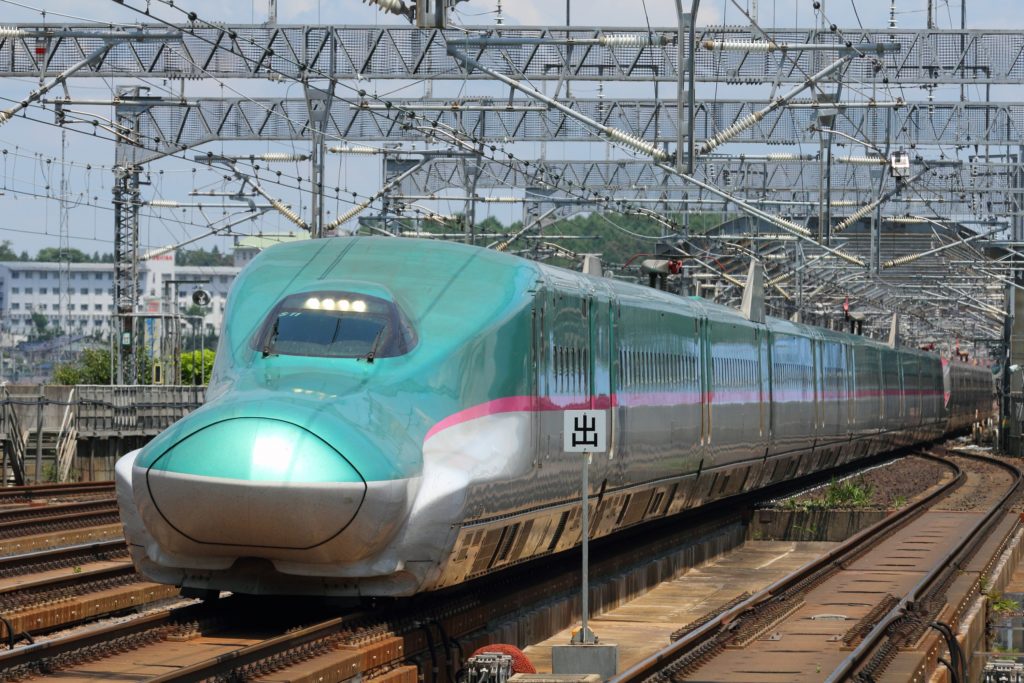
“E5 series” and “H5 series” are almost the same cars used in “Hayabusa” of Tohoku and Hokkaido Shinkansen. The “E5 series” is owned by JR East and has been in commercial operation since March 5, 2011. It was operated at 300 kilometers per hour, the fastest speed in Japan at that time. It has been running at a maximum speed of 320 km/h since March 16, 2013.

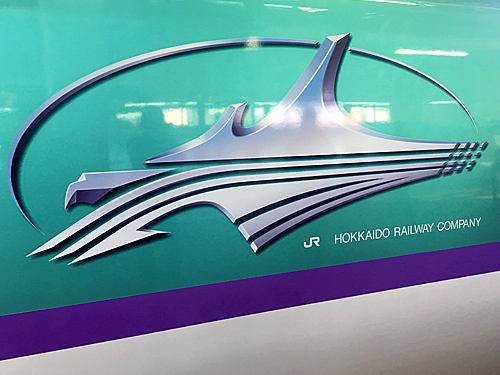
“H5 series” are owned by JR Hokkaido. It started to operate on March 26, 2016 in time with the opening of Hokkaido Shinkansen.
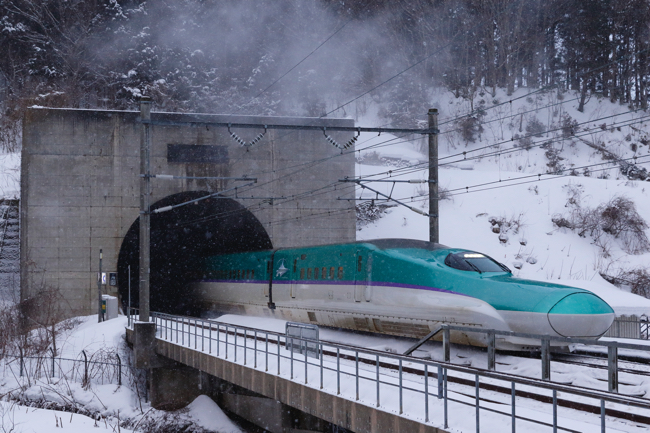
“E5 series” and “H5 series” are very similar. The obvious difference is the body line color. “E5 series” is pink (It is called Hayate Pink.) and “H5 series” is lavender (It’s called Ayaka Purple.). The logo of “H5 series” is designed in the motif of Hokkaido and white falcon. So you can tell it is Hokkaido Shinkansen by looking at it (“E5 series” has a falcon motif.).
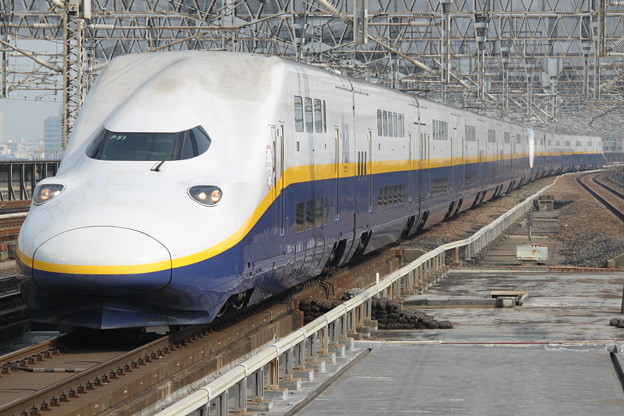
“E4 series” is a vehicle used as “Max Toki” “Max Tanigawa” on the Joetsu Shinkansen. It is the world’s largest high-speed train with a capacity of 1,634 people for a 16 car train. It features a 11.5 m long nose. The driver’s seat is shaped like a canopy, and the design that distinguishes from other Shinkansen trains became popular. It started operating on the Tohoku Shinkansen on December 20, 1997 and is now operated on the Joetsu Shinkansen. It is going to retire by the end of fiscal 2020.
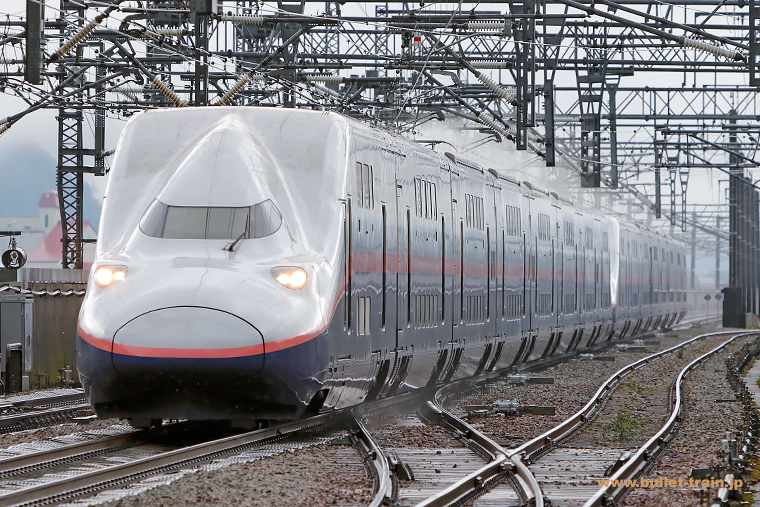
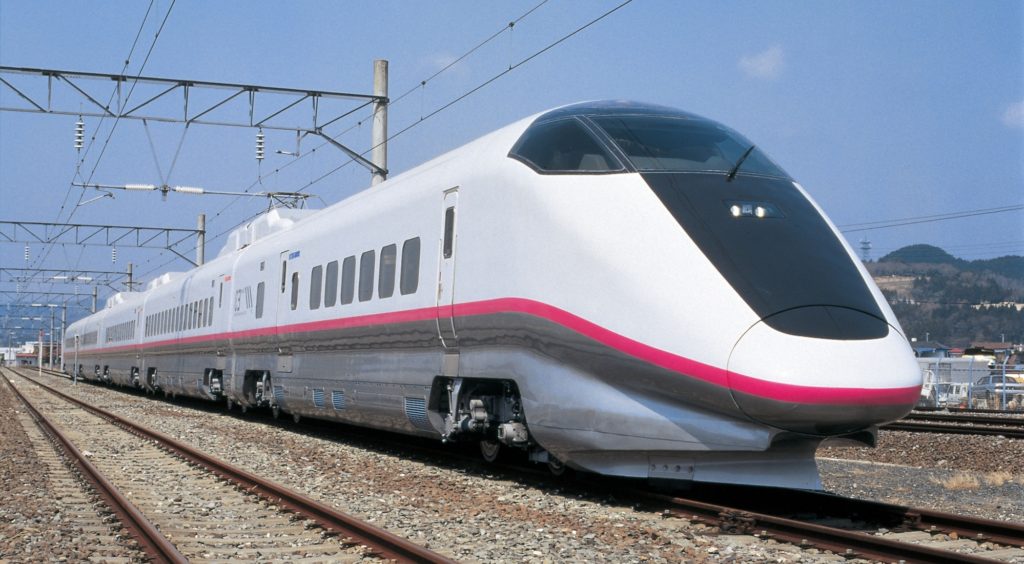
“E3 series” is a mini-Shinkansen introduced as a train for “Komachi” on the Akita Shinkansen, which opened on March 22, 1997. Currently, “E6 series” is used for “Komachi”. “E3 series” is used in “Tsubasa” of Yamagata Shinkansen.

The “E3 series” currently in operation on the Yamagata Shinkansen is colored in white and purple. But before, it was painted with a green line on a gray body.
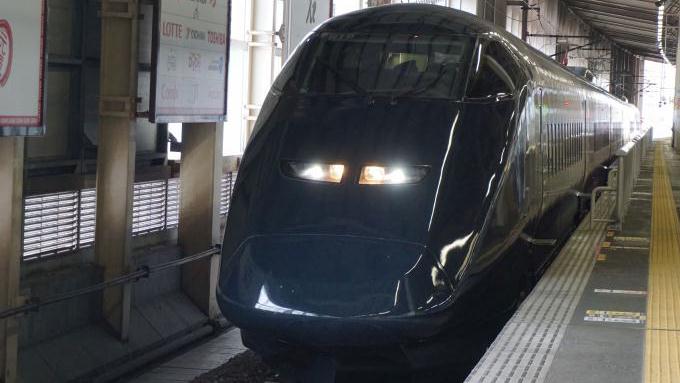
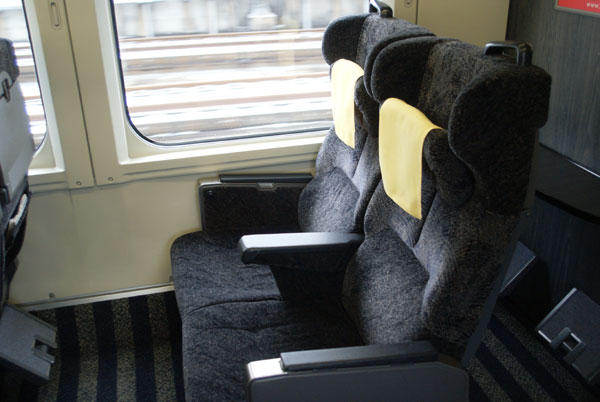
The Joetsu Shinkansen Special Sightseeing Train “GENBI SHINKANSEN (Genbi Shinkansen)”, which has been operated on weekends and holidays since 2016, is also “E3 series”. It’s a museum where you can enjoy modern art while traveling by Shinkansen.


